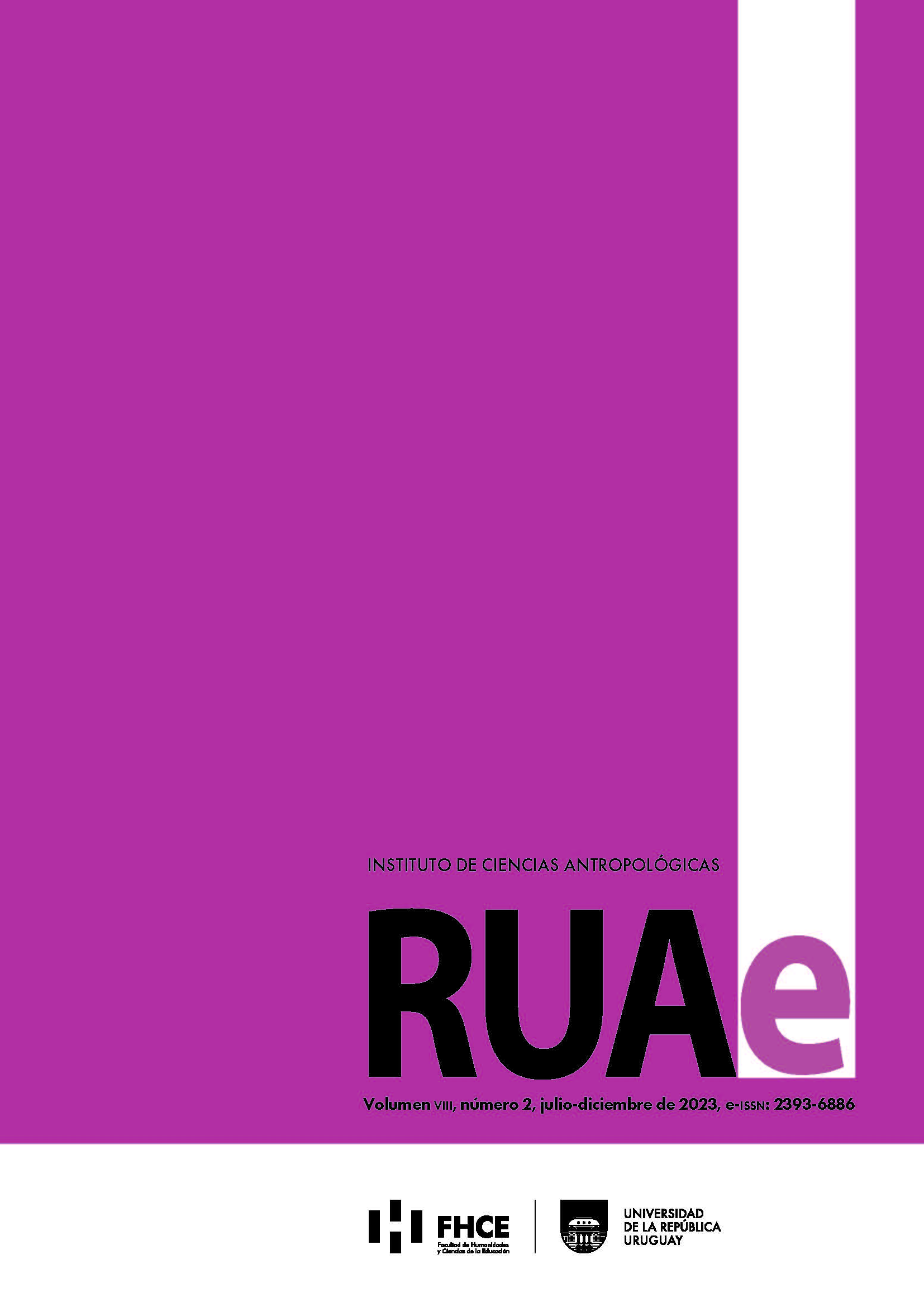POWER PLOTS IN PRISON AND ITS UNCERTAINTIES. A HERMENEUTICAL PROPOSAL THROUGH A CASE STUDY ON INISA WORKERS
Published 2023-11-20
Keywords
- Orden; Cárceles; Poder; Incertidumbre; Riesgo; Penalidad Juvenil; Funcionarios
- Order; Jails; Power; Uncertainty; Risk; Juvenile Penalty; Civil Servants
- Ordem; Prisões; Poder; Incerteza; Risco; Penalidade Juvenil; Funcionários públicos
How to Cite
Copyright (c) 2023 Federico Caetano Grau

This work is licensed under a Creative Commons Attribution-NonCommercial 4.0 International License.
Abstract
Far from configuring environments of totalizing and absolute power, where the prisoners are anchored in an obsequious and docile passivity, prison settings unfold on contingent matrices marked by strong turbulence, configuring a daily atmosphere that is subject to multiple zones of systemic uncertainty. Thus, traversed by various sources of material and symbolic violence, the intersubjective field formed between workers and inmates develops from indeterminacy,
On these coordinates, the production of the daily order is not achieved through a unilateral imposition of rules, but labor practices are mainly oriented towards a linking craft of order, where the semantic perimeters that regulate the daily activities are highly informal and are the result of situational agreements product of complex processes of dialogical negotiation, where the prisoners hold agency capacity. What are the feelings, discourses and practices of workers in relation to the negotiation processes involved in the production of daily order? How do they operate in violent scenarios permeated by risk, where the rules are changing and diffuse?
Through a qualitative case study carried out on the workers of the National Institute for Adolescent Social Inclusion (INISA), this article has as its main objective the construction of a hermeneutic framework that establishes visibility on the subjective experience of workers with adolescents internees, taking as a reference the dialogical and negotiated configuration of the daily order of confinement, demarcated by contingency and subject to multiple plots of power and influence.
Downloads
References
- Bourdieu, P., y Wacqant, L. (1995). Respuestas. Por una antropología reflexiva. Ciudad de México: Grijalbo
- Caetano Grau, F. (2022a) El trabajo en contextos de encierro. Un estudio de caso sobre las representaciones de
- riesgo de los trabajadores del INISA. (Tesis de Maestría en Sociología). Facultad de Ciencias Sociales,
- Universidad de la República, Montevideo.
- Caetano Grau, F. (2022b). Del solipsismo argumentativo al ecosistema de controversias: apuntes para una
- epistemología dialógica. Ciencia Latina Revista Científica Multidisciplinar, 6(6). Recuperado de https://
- www.researchgate.net/publication/366222676_Del_solipsismo_argumentativo_al_ecosistema_de_
- controversias_apuntes_para_una_epistemologia_dialogica
- Caetano Grau, F. (2022c). El paradigma de la ambigüedad: la penalidad juvenil entre la tutela, lo punitivo y la
- protección integral. V Congreso Latinoamericano y Caribeño de Ciencias Sociales, Democracia, Justicia
- e Igualdad. Resúmenes y ponencias. Eje temático 05: Infancia, adolescencia y juventudes (pp. 175-193).
- Montevideo: Flacso Uruguay.
- Chauvenet, A. (2006). Privation de liberté et violence: le despotismo ordinaire en prison. Deviance et Société, 30(3),
- -388.
- Crozier. M., y Friedberg. E. (1977). El actor en el sistema. París: Seul.
- Crewe, B. (2011). Soft power in prison: Implications for staff-prisoner relationships, liberty and legitimacy. European
- Journal of Criminology, 8(6), 455-468.
- Douglas, M. (1996). La aceptabilidad del riesgo según las ciencias sociales. Barcelona: Paidós.
- Ferrando, F. (2013). Después de Babel… una mirada a los paradigmas de implementación de medidas socioeducativas a menores en conflicto con la ley dentro del Semeji-INAU. (Monografía de Grado en
- Sociología). Facultad de Ciencias Sociales, Universidad de la República, Montevideo.
- Ferreccio, V. (2023). La larga sombra de la prisión. Una etnografía de los efectos extendidos del encarcelamiento.
- Buenos Aires: Prometeo
- Foucault, M. (1976). Vigilar y castigar. El nacimiento de la prisión. Buenos Aires: Siglo XXI.
- Garland, D. (2005). La cultura del control. Crimen y orden social en la sociedad contemporánea. Barcelona: Gedisa
- Gilbert, M. (1997). The illusion of structure: a critique of the classical model of organization and the discretionary
- power of correctional officers. Criminal Justice Review,22(1), 49-64.
- Giraud, C. (1993). L’acrion commune. Essai sur les dynamiques orgnnisntionnel. París: L’Harmattan.
- Giddens, A. (1995). La constitución de la sociedad. Buenos Aires: Amorrortu
- Goffman, E. (2001). Internados: Ensayos sobre la situación social de los enfermos mentales. Buenos Aires: Amorrortu.
- González Laurino, C., y Leopold S. (2013). De crisis y reformas. El actual funcionamiento del sistema penal juvenil
- en Uruguay desde la perspectiva de sus actores y expertos. En C. González, S. Leopold, L. López y P.
- Martinis. P. (Coords.), Los sentidos del castigo. El debate uruguayo sobre la responsabilidad en la infracción
- adolescente (pp. 45-70). Montevideo: Trilce.
- Guber, R. (2004). El salvaje metropolitano. reconstrucción del conocimiento social en el trabajo de campo. Buenos
- Aires: Paidós.





